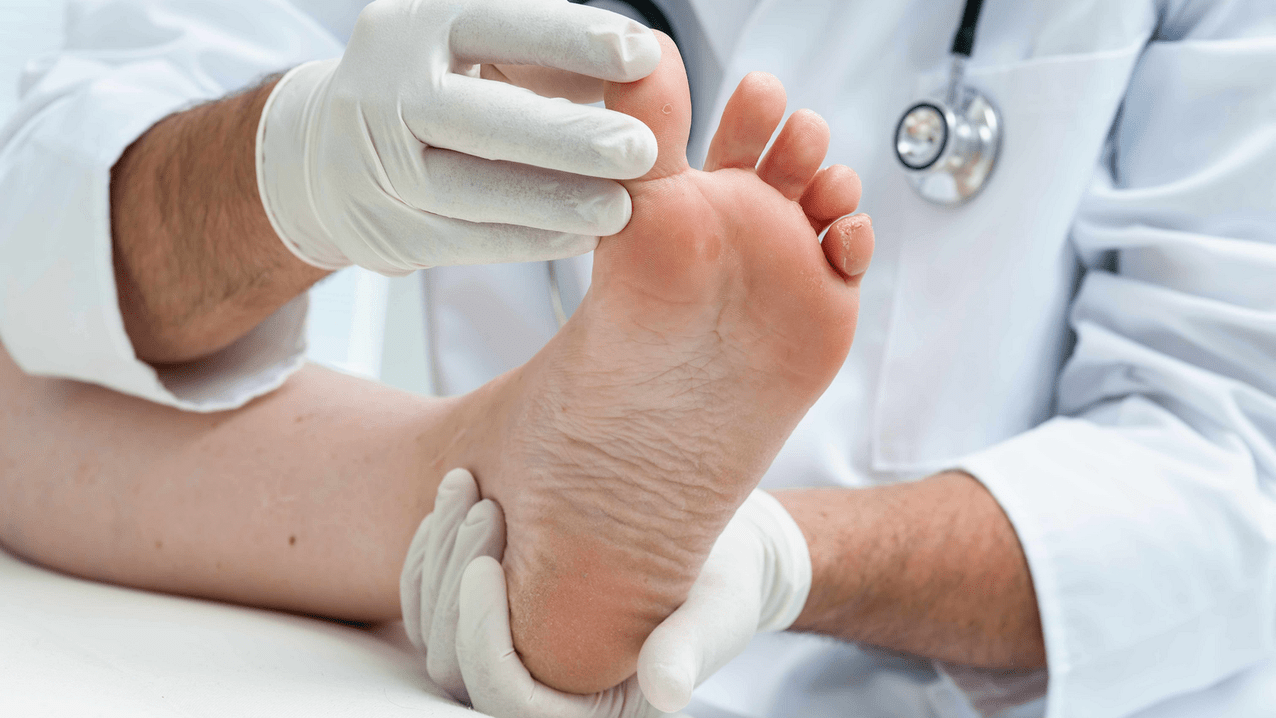
Fungal infections of the feet begin in the areas between the toes. Later, the infection can spread to the feet and nail beds. The disease is caused by dermatophyte, mold or yeast fungi. According to statistics, about 20% of people in our country have foot fungus. The severity of the disease depends on the type of infection, but in any case, the disease must be treated, because peeling, severe itching, inflammation and unpleasant smell of the feet are a serious concern. We will tell you how to get rid of foot fungus.
What does athlete's foot look like?
A fungal infection causes inflammation of the skin where the fungal infection is located. The main types of dermatomycosis of the legs are:
- The fungus of the sole of the foot is squamous, when the affected area turns red, crusts form, and cracks form in the skin. The patient often does not feel any discomfort, which contributes to the wide spread of this type of disease.
- Dyshidrotic athlete's foot is localized in the arch of the foot that is not in contact with the floor surface. At the places of infection, small blisters are formed that spread to the inner and outer parts of the foot, forming erosion and diaper rash on the surface of the skin. The process is accompanied by itching and burning sensation. After the vesicles (bubbles) open, the disease becomes squamous.
- A fungus that affects the interdigital space on the skin of the feet is called the intertriginous form of the disease and is its most common type. It appears in the form of cracks, the edges of which are covered with a white border of exfoliating epidermis. As a rule, this form has a long-term chronic course and is difficult to treat.
- On the shin or ankle, the fungus appears as pink or red round spots covered with skin scales. As the infection progresses, the foci of inflammation grow, the process is accompanied by severe itching.
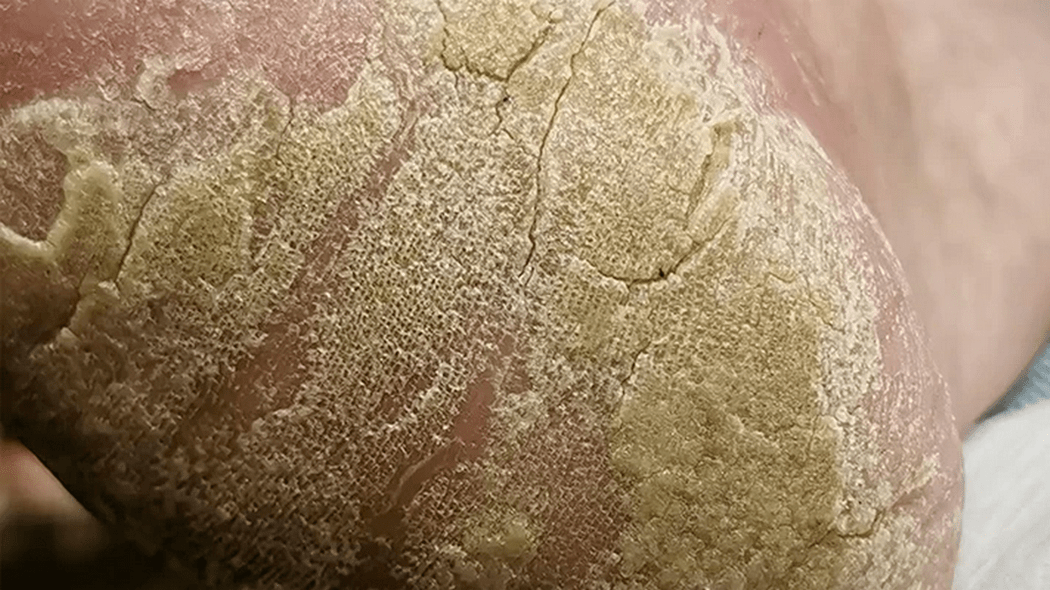
Onychomycosis
This disease is a type of athlete's foot characterized by a fungal infection of the nail. You can get infected in public showers, saunas, baths and swimming pools. Scales containing pathogenic microorganisms are quite easily detached from the nail plate and can remain on floors, carpets, bedding and unpainted benches. High humidity not only allows them to survive, but also promotes active reproduction, and therefore the risk of infection increases significantly.
In the initial stage, the infection reaches the epidermis of the feet, causing severe itching. To relieve the discomfort, a person begins to comb the infected area, but this only makes the situation worse. The areas of the skin affected by the fungus are covered with small scratches and cracks, microorganisms begin to spread, penetrate under the nail plate and then begin to multiply uncontrollably.
Serious illnesses such as diabetes or HIV, poor circulation or nail damage greatly increase the risk of infection.
Onychomycosis is divided into 3 types:
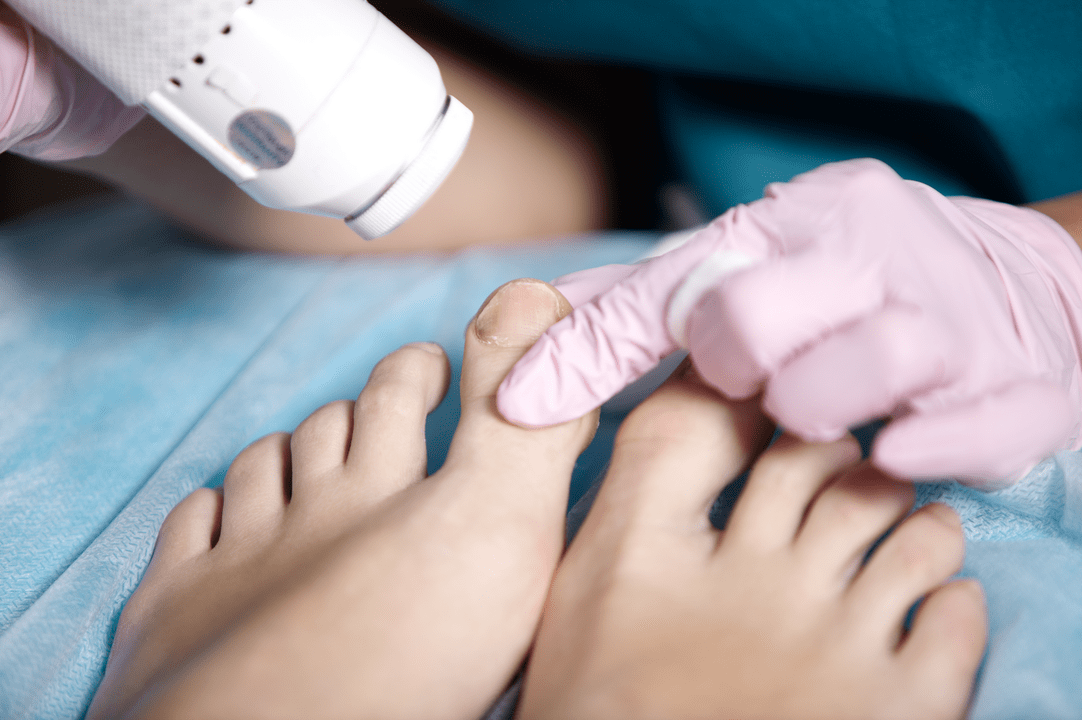
- Normotrophic. With this type of onychomycosis, the nail color changes from normal to yellow-brown. The natural shine, shape and thickness of the nail remain unchanged.
- Hypertrophic. The last change in the color of the nail occurs, its shine disappears, its shape changes, thickening develops and partial destruction begins.
- Onycholytic. The affected nail becomes brown in color, thins and begins to break. He gradually leaves the bed. Uneven layers may appear on the exposed part of the nail bed.
Treatment of this type of fungus on the palm and heel with local drugs is ineffective due to the fact that the fungal spores are located under the nail. Before starting the treatment, the nail must be removed. This is done with the help of keratolytic drugs and patches are also used. In some cases, it is possible to remove the nail mechanically: the dead parts of the nail are cut with a nail file or nippers. It is important to remember that all instruments used must be sterile.
The combined use of mechanical removal and keratolytic patches is the most effective way to remove diseased nails. As for keratolytic agents, you can use a ready-made kit with a broad-spectrum antifungal drug. It contains a special ointment, files for breaking the nail and a patch. After removing the nail plate, you should start taking systemic antifungal drugs: antifungal drug for systemic use, oral antifungal agent.
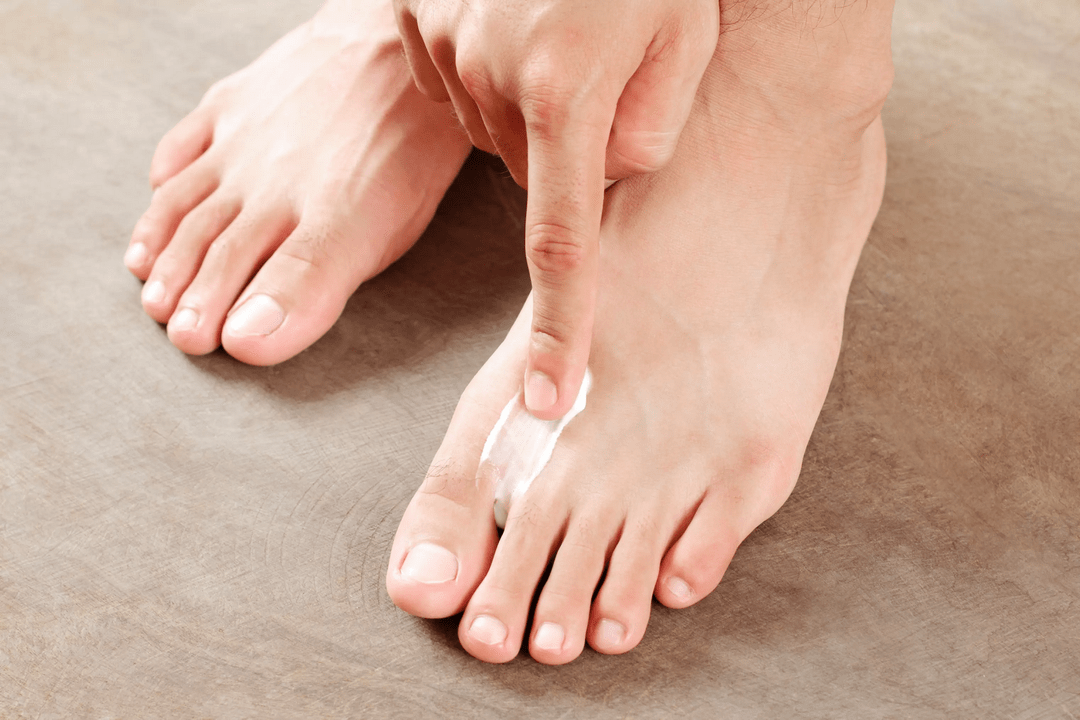
Symptoms
Depending on the form of the disease and the location of the inflammation, the infection is accompanied by various symptoms with the following common signs:
- peeling of the skin;
- light or severe redness of the skin at the site of the lesion;
- itching;
- burning sensation;
- blistered rashes or cracks on the skin.
Blisters between toes
The main symptom of athlete's foot, which is caused by Candida fungi, is the appearance of blisters between the toes, usually between the fourth toe and the little toe. The course of the disease is accompanied by swelling of the skin adjacent to the fingers, red areas with small bubbles on the surface. The source of inflammation is surrounded by the edge of the worn epidermis.
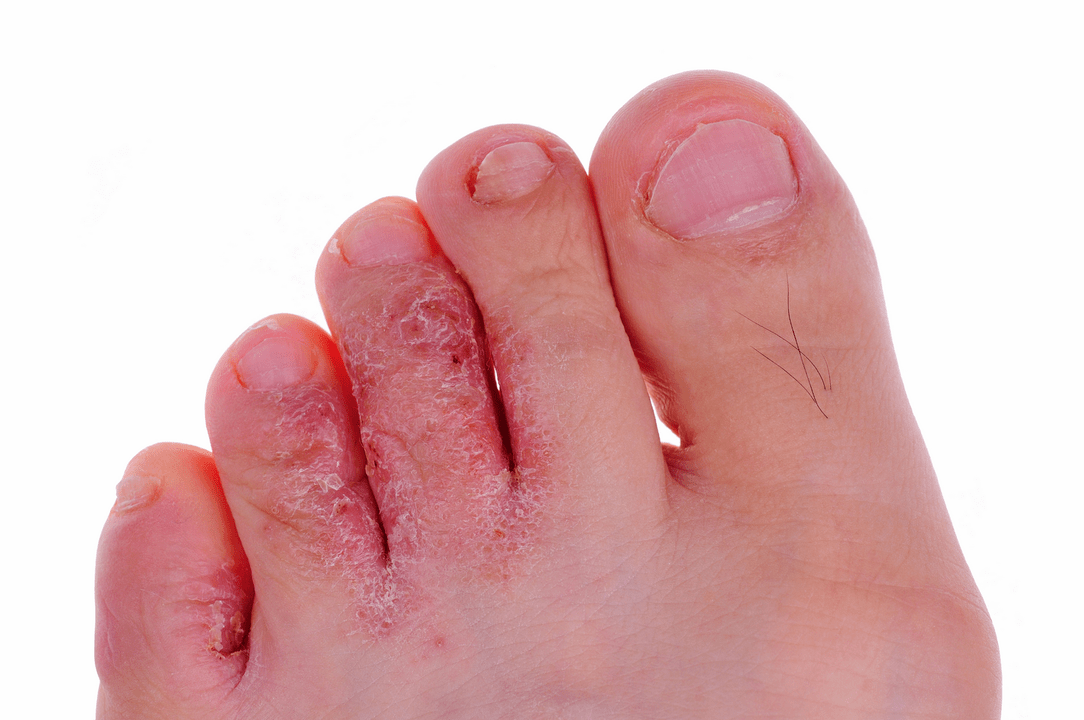
Dihydrate form
Vesicular fungus, or dyshydric mycosis, as it is called, is the rarest type of the disease. Its main manifestation is numerous vesicles united in conglomerates. Vesicles are bubbles filled with pus or nutrient fluid. When the fluid begins to cloud, the vesicles burst, leaving ulcers. Forming open wounds on the skin, they begin to merge into a line. This happens due to drying and peeling of the skin layers.
About 70% of infections with vesicular fungus are accompanied by allergic rashes. Various bacteria and viruses begin to penetrate the ulcers. As a result, the disease becomes confusing and it becomes difficult to identify the original pathogen. Therefore, you should consult a doctor as soon as the initial symptoms appear: he can quickly determine the type of foot fungus and start therapy.
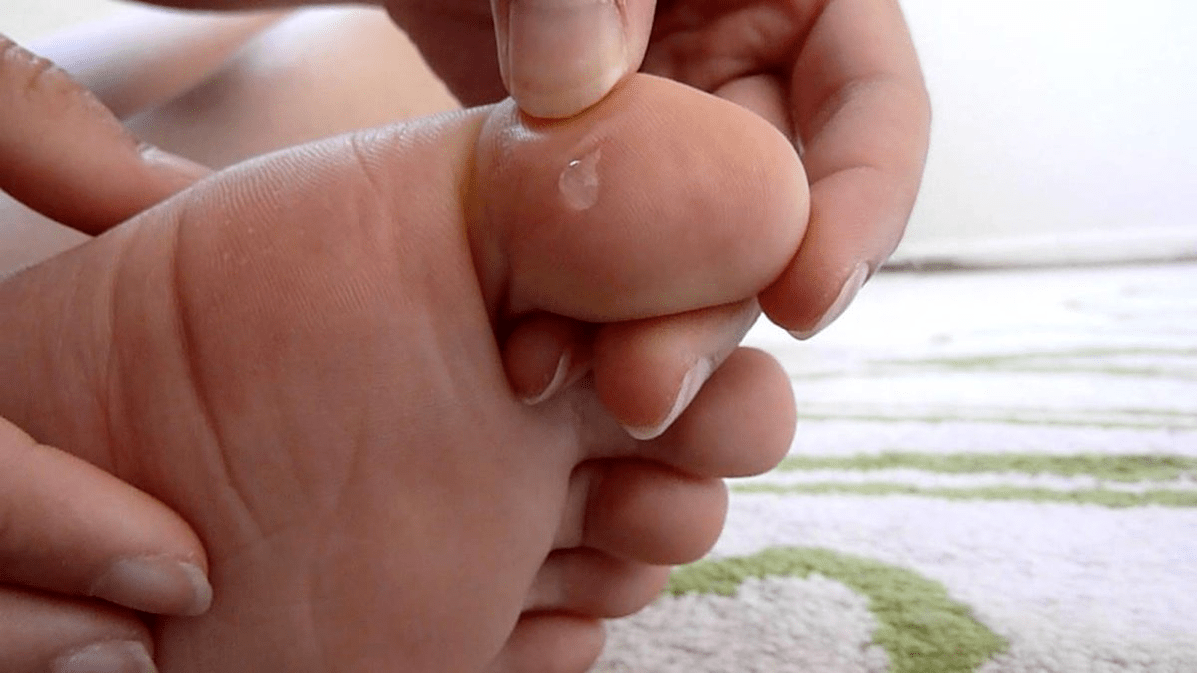
Moreover, this should be done immediately. First of all, before using antimycotic drugs, it is necessary to eliminate the acute process. It is better to entrust this work to a specialist: he can carefully puncture the vesicles, treat the remaining ulcers with two percent boric acid and apply a bright green solution or methylene blue.
Treatment of advanced disease involves the use of corticosteroid ointments. After eliminating the inflammatory process, it is recommended to use local antimycotic agents. This will prevent the pathogen. We continue to consider the names and types of foot fungus.
First signs
The disease of the skin of the legs is always accompanied by a number of general symptoms, the appearance of which indicates an infection of the skin with the spores of harmful microorganisms. You should seek help from a dermatologist in the following cases:
- the appearance of cracks or blisters on the skin in the folds of the legs or between the toes;
- thickening and significant thickening of the skin of the feet;
- redness of skin areas, their peeling;
- burning or itching sensation.

Duration of treatment
Combined infection of the skin and nail plate requires one to three months of rehabilitation therapy. These terms are considered the standard for the most medically effective pharmaceutical products.
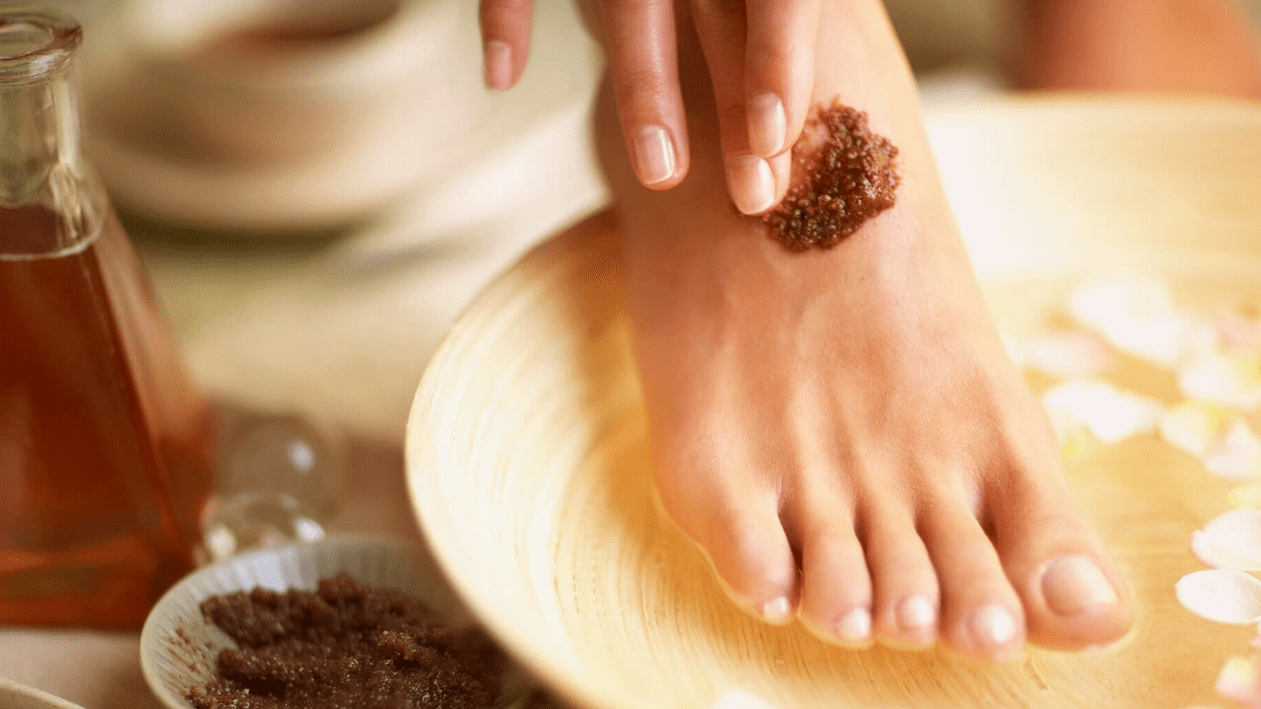
Pregnancy requires a fascinating trip to the doctor to find a way to get rid of mycodine infection. Strong drugs and treatments that require the use of similar drugs are prescribed only under the supervision of a doctor, observing strict dosages. Many antibacterial tablets that effectively destroy the fungus can cause significant harm to the fetus. Therefore, whenever possible, during pregnancy, patients are recommended to be treated using traditional medicine recipes. Many of them make it possible to cope with the disease, but on the condition that the disease does not reach a complicated stage. Only classical medicine can help to cope with the advanced form.
Modern medicines allow you to completely restore your feet to health within two weeks, provided that the signs of infection are detected in time.
Reasons
Infection occurs for a number of reasons after direct or indirect contact of the patient with the carrier of infection or his personal belongings, household items. Risk factors for contracting tinea pedis include:
- leg circulation disorders and related diseases (varicose veins);
- weakened general or local immunity;
- non-compliance with hygiene rules;
- weakening of the body's defense systems after taking antibiotics;
- increased sweating of the skin of the feet;
- the presence of small injuries on the skin (scratches, scratches).
Treatment methods
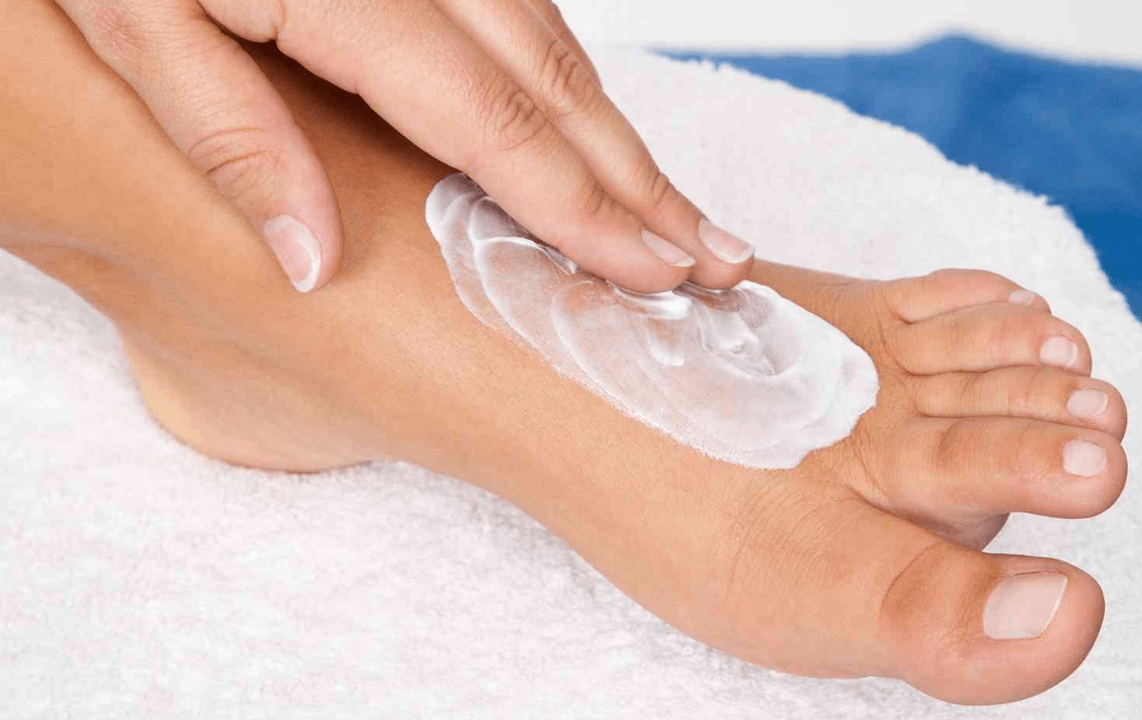
In most cases, it is possible to completely get rid of the disease detected in time within a maximum of one month. This is a very important point in the treatment, because the itching, tissue damage and other manifestations disappear, the patient sometimes stops the treatment, believing that the disease has been defeated. But the remnants of the infection can easily cause a relapse.
Treatment procedures should be stopped only after the doctor's permission and passing the necessary tests. This is especially true for advanced forms of the disease. The fungus "fixes" firmly in the body, and sometimes it can take at least six months to get rid of it. However, the external manifestation of foot fungus in the form of various lesions on the skin or nails disappears earlier, creating an illusion of health. In this case, stopping the therapy is almost guaranteed to cause a relapse to the patient.
Treatment of feet for mycoid infection is carried out comprehensively. To get rid of the disease, local antifungal drugs and pills are used to eliminate the infectious agent that penetrates the body. Certain medications may be prescribed to relieve itching, pain, brittle nails, and speed up tissue regeneration. In order not to cause an allergic reaction or poisoning of the body due to the simultaneous use of incompatible drugs, it is not recommended to combine them independently with the main therapeutic group.
Treating athlete's foot at an early stage is quite simple. As a rule, two weeks of therapy are enough to eliminate the symptoms of mycoid infection.
Types of mycoses
Only a dermatologist can accurately determine the type of fungus with a visual examination, the data of which is confirmed using laboratory tests. Depending on the causative agent of fungal infection of the skin of the feet (yeast, mold, fungi of the Trichophyton or Candida genus), there are several main types of the disease, including:
- candidiasis of the feet;
- athlete's foot;
- trichophytosis (or rumbicosis) of the feet;
- onychomycosis (nail fungus).
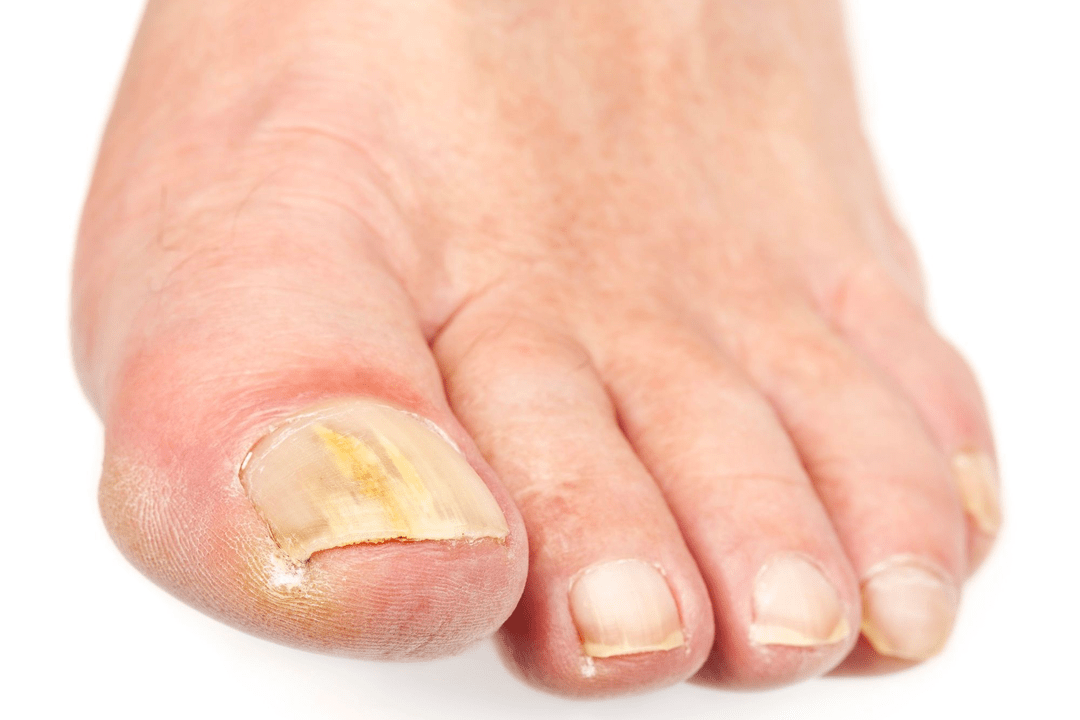
Prevention
Simple preventive measures will significantly reduce the likelihood of infection. You should use only personal items and treat your nails with sterile tools. You should use your own shoes when visiting public places such as bathhouse, sauna, swimming pool, beach. By the way, try to choose it so that it is comfortable and your feet can breathe. In order not to encounter different types of foot fungus later, you need to worry about prevention in advance.
How to treat
Treatment of skin fungus on the legs is a long-term complex therapy, including the use of systemic oral agents in severe cases. For small lesions, emphasis is placed on local therapy using antibacterial and antiseptic agents. In acute forms of the disease, hot baths are prescribed to eliminate inflammation and remove dead skin cells. In some cases, it is necessary to treat the patient's shoes and clothes with special compounds to prevent relapses.
System Tools
Systemic oral agents are prescribed in cases where local drugs are ineffective and in severely developed forms of the disease. For fungal infections of the deep layers of the skin, a course of oral antifungal drugs is indicated, they not only treat the acute stage, but also prevent the disease from becoming chronic. The dosage regimen, duration of the course and dosage are selected by the attending physician.
Doctors recognize antifungal drugs for systemic use as the best means for the systemic treatment of foot fungus. They have an active fungicidal (destroying) and funginistic (suppressing the spread of bacteria) effect, their active components can be collected in the upper layers of the epidermis, nails and hair. Be sure to read the instructions for use before taking, because these products have contraindications.
Local remedies
Therapy with local drugs includes not only the use of antifungal creams and ointments, but also the use of special sprays, aerosols and lotions. The form of the drug is recommended by a dermatologist depending on the type of the causative agent of the infection, the severity of the lesion on the skin of the feet, the stage of the disease and the individual characteristics of the patient's body. The duration of treatment with a local drug can be from 2 weeks to 3 months.
For athlete's foot and other forms of mycosis of the skin of the feet, an aerosol, a suspension for application to the skin, or a solution for local use can be prescribed. The products are either applied directly to the skin damaged by the fungus, or wet tampons soaked in a medicinal solution are applied. All necessary recommendations for use can be obtained from your doctor.
Antifungal ointments
When treating foot skin fungus, in most cases, an antifungal ointment is prescribed, for example, a cream with an active ingredient of terbinafine hydrochloride or its analogues. Apply the drug in the form of an ointment or cream to the dry skin of the heels or other areas of localization of inflammation, previously carefully cleaned of dead epidermal cells and any other plaque. The duration of treatment for different types of the disease can be from 2-3 weeks to 2-3 months.
Experts consider a wide range of ointments to be an effective means of combating foot fungus in various forms and stages. The active components of the drug fight fungal infection locally, suppressing the reproduction of its pathogen. The ointment is applied to the affected skin washed two to three times a day, depending on the degree of skin damage, for several weeks or months.
Folk treatment
The use of folk remedies is possible only with the consent of the attending physician. The main products for baths, compresses and applications against fungus on the skin of the feet are vinegar, propolis, baking soda, decoctions of medicinal plants and laundry soap. The following procedures apply:
- Baths with soda and salt solution. Use 3 tablespoons for 3 liters of water at a temperature of 36-40 ° C. l. salt and 3 tbsp. l of soda. The duration of the procedure is 10-15 minutes, after the bath, wash your feet under running warm water. It is used for acute forms of fungus twice a day for 7-10 days.
- Lotions with herbal decoction. To make a decoction, mix dried oak bark, calendula flowers and verbena leaves in equal proportions. To prepare the broth, 3 tbsp. l. pour a glass of boiling water over the mixture and keep it on low heat for 10-15 minutes. Compress with the resulting broth for 20-30 minutes three times a day.
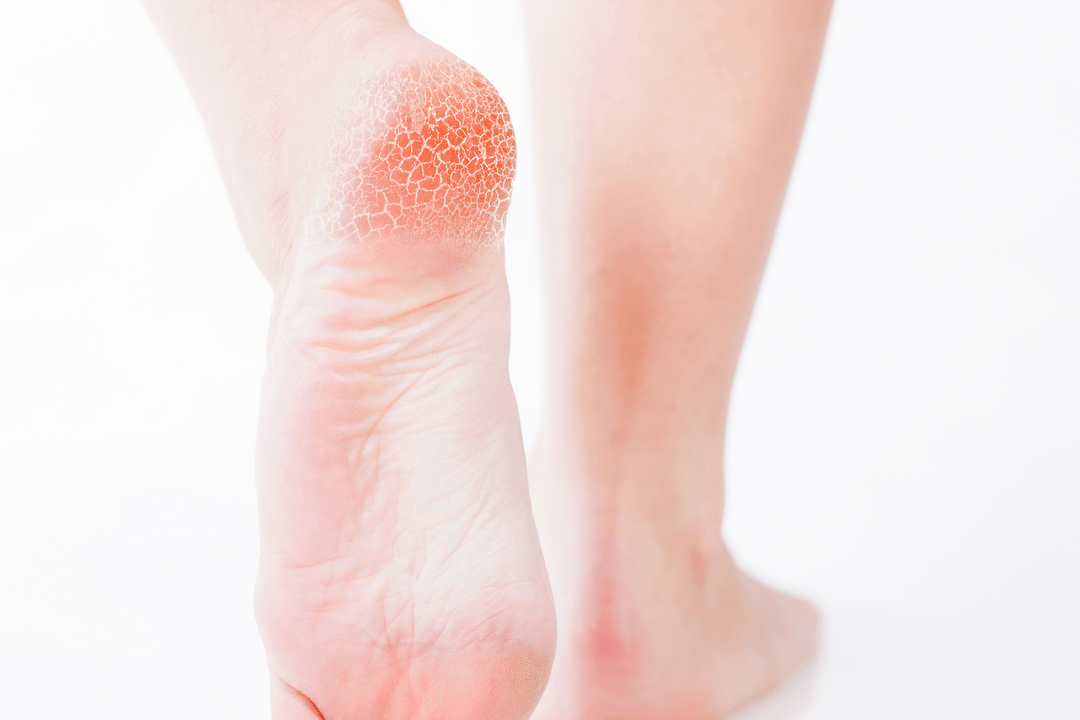
Deleted form
Mycosis of the deleted form is almost invisible, its symptoms are minimal. These include: mild itching, burning, flour-like crusts, microcracks located in the interdigital regions. If you do not contact a specialist when the first signs of the disease appear, the pathology can turn into a form of onychomycosis, which is more difficult to treat. In this case, the peeled nail will last from one to six months.
Mycosis of the removed form is treated with local preparations: ointments, creams, foams. They allow to create a layer on the foot that will protect against infection by other infections. It is not recommended to wash your feet for 24 hours after applying this medicine.
Systemic therapy can be prescribed only in extreme cases. The problem is that such drugs are toxic and have a negative effect on some internal organs, such as the liver. Therefore, if there is an effect from the use of local means, it is better not to take pills.
Ways of infection
Fungal spores remain alive in the environment for a long time, so it is easy to get infected in the most unexpected places. But the most favorable conditions for their development are heat and high humidity. Therefore, people who visit the following are at risk:
- swimming pool;
- baths;
- saunas;
- fitness centers;
- beaches.
Even if constant disinfection is carried out, fungi can appear on anything located there. Therefore, you should avoid common items in such places and don't forget to take a spare pair of shoes with you.
Military personnel are at risk. Often, soldiers in the army wear uncomfortable shoes that do not allow air to pass through. Because of this, the legs sweat, and microtraumas penetrated by fungi appear.
There are two types of infection. The first is the direct way of direct contact with the infectious agent when communicating with a sick person, caring for an animal or walking barefoot on the ground and sand. The second - an indirect way causes infection through objects belonging to infected people or pets.
Preventive measures

It is always easier and safer for health to prevent a disease than to treat it using even the mildest method. In the case of a fungal infection, prevention is one of the mandatory norms of life, because it is very easy to get infected. Therefore, it is recommended to follow a few simple rules to reduce the risk of contracting the disease:
- try to eat healthy and eat as healthy as possible;
- do not use other people's things and personal hygiene products;
- use basic protective equipment in public places, such as replacement shoes and antibacterial hygiene products;
- wash your feet and change your socks regularly;
- leading a healthy lifestyle;
- Take a regular bath to improve foot health;
- Disinfect shoes periodically.
Prevention of fungal infection is important not only to prevent, but also if the disease occurs. In this case, compliance with sanitary and hygienic standards helps to speed up recovery and prevent others from being infected with the fungus.
















